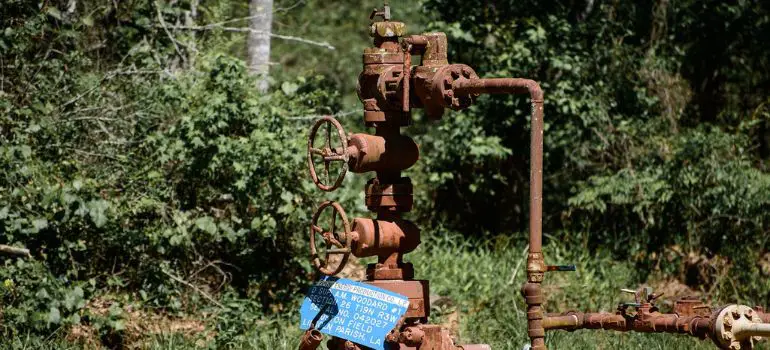Introduction
Removing old gas lines from your house is a task that may seem daunting at first, but with the right knowledge and precautions, it can be done safely and effectively. In this comprehensive guide, we will walk you through the steps to safely remove old gas lines from your house. Whether you’re renovating your home or simply upgrading your gas system, this article will provide you with the essential information you need.
Understanding the Risks
Before we delve into the removal process, it’s crucial to understand the potential risks associated with old gas lines. Gas leaks can be hazardous and even life-threatening. If you are uncertain about handling gas lines, it’s recommended to seek professional assistance. However, if you are confident in your abilities and have taken all safety precautions, you can proceed with caution.
Assess the Situation
The first step in removing old gas lines is to assess the situation thoroughly. Here are the key aspects to consider:
Turn Off the Gas Supply
Before you begin, ensure that the gas supply to your house is turned off. Locate the main gas shut-off valve and turn it clockwise to shut off the gas flow. This step is crucial to prevent any gas leaks during the removal process.
Gather Necessary Tools and Materials
To remove old gas lines, you’ll need a set of tools and materials, including:
- Wrenches
- Pipe cutter
- Pipe threader
- Teflon tape
- Safety goggles
- Gloves
Inspect the Gas Lines
Carefully inspect the old gas lines to identify any damage, corrosion, or leaks. If you find any issues, it’s best to consult a professional before proceeding.
Removing Old Gas Lines
Once you’ve assessed the situation and gathered the required tools, you can proceed with the removal process.
Loosen the Fittings
Using a wrench, carefully loosen and remove the fittings connecting the old gas lines. Ensure that you turn the fittings counterclockwise to loosen them.
Cut the Gas Lines
Cutting the gas lines is a critical step in the process of removing old gas lines from your house. This step must be executed with precision and care to ensure safety. Here’s how to cut the gas lines:
1. Safety Precautions:
Before you begin, ensure that you have taken all necessary safety precautions:
- Wear safety goggles to protect your eyes from any debris or gas.
- Put on gloves to protect your hands.
- Ensure proper ventilation in the work area to disperse any gas fumes.
- Keep all open flames, sparks, and smoking materials far away from the work area.
2. Locate the Gas Lines:
Identify the section of the gas lines you want to remove. Typically, gas lines run from the gas meter to various appliances in your home.
3. Turn Off the Gas Supply:
As mentioned earlier, ensure that the gas supply to your house is turned off at the main gas shut-off valve. This step is crucial to prevent any gas from escaping during the cutting process.
4. Prepare the Tools:
Gather the necessary tools for cutting the gas lines. You’ll need a pipe cutter, which is specifically designed for cutting through pipes.
5. Measure and Mark:
Measure the section of the gas line you want to remove carefully. Mark the pipe at the exact spot where you intend to make the cut. Double-check your measurements to ensure accuracy.
6. Use the Pipe Cutter:
Position the pipe cutter’s cutting wheel on the marked spot of the gas line. Make sure it’s aligned precisely where you want to cut. Apply steady pressure on the cutter’s handles, rotating it around the pipe as you go. Continue turning the cutter until the pipe is severed cleanly.
7. Dispose of the Cut Pipe:
Once you have successfully cut the gas line, carefully remove the severed section. Be cautious not to damage any nearby components or create sparks during this process.
8. Cap the Ends:
Immediately after cutting, cap the ends of the remaining gas lines using appropriate fittings and Teflon tape. This step is crucial to prevent any gas from escaping into your home.
9. Inspect for Leaks:
After capping the ends, inspect the connections for any signs of gas leakage. You can do this by applying a gas leak detection solution or soapy water to the connections. If you notice any bubbles forming, it indicates a leak, and you must address it immediately.
10. Double-Check Everything:
Before proceeding with any further work, double-check that the gas lines are securely capped, and there are no leaks. It’s essential to ensure a tight and secure seal to prevent gas leaks.
Cap the Ends
After cutting the gas lines, cap the ends using appropriate fittings and Teflon tape. This step is crucial to prevent any gas from escaping into your home.
Seal the Connections
Using a pipe threader, thread new pipe sections into the existing gas line connections. Apply Teflon tape to the threads to ensure a tight and secure seal.
Safety Precautions
Throughout the removal process, it’s essential to prioritize safety:
Ventilation
Ensure proper ventilation in the work area to disperse any lingering gas fumes.
Safety Gear
Always wear safety goggles and gloves to protect yourself from any potential hazards.
Choosing the Right Replacement
When removing old gas lines, you may also be considering replacing them with newer and more efficient options. Here are some factors to keep in mind when choosing the right replacement:
Gas Line Material
Decide on the material for your new gas lines. Common options include copper, stainless steel, and flexible piping. Each has its advantages and disadvantages, so choose the one that suits your needs and budget.
Sizing
Ensure that the replacement gas lines are appropriately sized for your appliances and the distance they need to cover. Gas lines that are too small can lead to insufficient gas flow, affecting appliance performance.
Permits and Regulations
Check with your local authorities and gas utility company for any permits or regulations related to gas line installation. Compliance with these regulations is crucial for safety and legal reasons.
Hire a Professional
While some DIY enthusiasts may tackle gas line replacements, it’s often safer and more reliable to hire a licensed professional. They have the expertise to ensure proper installation and compliance with all safety codes.
Testing and Inspection
Pressure Test
After installing the new gas lines, conduct a pressure test to check for leaks. This test involves pressurizing the lines and monitoring for pressure drops, which can indicate a leak.
Professional Inspection
Once you have completed the installation and pressure test, it’s a good idea to have a professional inspector review your work. They can provide peace of mind that everything is correctly installed and safe.
In conclusion, removing old gas lines from your house and replacing them with newer ones is a task that requires careful planning, safety measures, and often the assistance of a professional. Prioritizing safety and compliance with local regulations is crucial throughout the process. By following these steps and guidelines, you can ensure a safe and successful gas line removal and replacement project.
Conclusion
Removing old gas lines from your house is a task that requires careful planning and execution. By following the steps outlined in this guide and taking necessary safety precautions, you can successfully complete this project while ensuring the safety of your home and family.
FAQs
While it is possible to remove old gas lines on your own, it’s recommended to seek professional help if you are unsure or inexperienced.
The main gas shut-off valve is usually located near the gas meter. It’s a lever that can be turned clockwise to shut off the gas supply.
If you detect a gas leak, immediately evacuate the area, and call your gas company’s emergency hotline.
It’s generally not recommended to reuse old gas lines, as they may be corroded or damaged. It’s safer to install new gas lines when needed.
Regularly inspect your gas lines for signs of damage or corrosion at least once a year. If you suspect any issues, consult a professional for a thorough inspection and maintenance.



